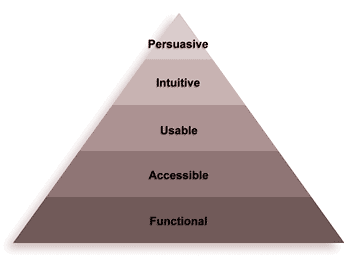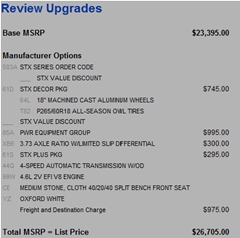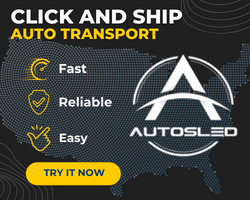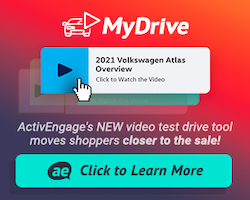Since “retiring” from JD Power and Cars.com, Dennis Galbraith has been writing a book titled, Sales Integration.
The book is about online consumer sales with an emphasis on automotive examples since that is both Dennis’ background and an industry he sees poised on the edge of massive change.
In my experience with him, Dennis has always had a gift in looking past the way things are today and by studying how the rest of the world works, concisely capturing and communicating looming macro-trends into actionable steps any industry can take today.
But don’t take my word for it. Below are some examples from the book.
Example #1 ADVERTISING is attracting the shopper, SALES is interacting with them.
When a shopper interacts with vehicle inventory, a website is listening, matchmaking, and demonstrating, just as a salesperson does in the store. These are sales functions, and those who think about them as advertising mistakenly focus on what they want to tell the shopper rather than how to interact with them. Telling isn’t selling and “call or email me” is not ecommerce and not what the consumer wants as an online experience with convenience and transparency.
Example #2 We’re not going to take it any more!
The online shopper is in charge of the sales process. Shoppers spend hours online interacting with the computer with no one in the store even knowing they are in market. Only the shopper decides when they are going to transfer from the online sales process to the offline sales process and how they will do it – by phone, email, chat, or walk-in. The shopper steps into the store with more control than ever. Your competitor’s inventory is on the iPhone in their pocket. The point here is that those who learn to work with Internet empowered shoppers will succeed better than those who fight against it. Think you are not fighting against it? Read on. Dennis thinks the whole industry is and isn’t all that aware that they are even doing it, “since it has always been that way” and “we have showrooms full of salespeople so we use the Internet to get consumers into them” still seems to be the prevalent thinking.

Example #3 Customers For Life.
Selling includes delivery and account management. Automotive success is not just a function of how many sales are made today, but how well those sales are managed after delivery. Future sales through parts, service, repeat business, and referral business have always been the sweet spot of profitability in any industry. If it truly is easier and more profitable to keep the customers you already have vs. perpetually prospecting, how does your website stack up in its role of facilitating this? Is your website so functionally useful that your current customers view that as a reason to keep doing business with you? Have you asked them?
Example #4 Workflow, workflow, workflow.
 Galbraith’s law of website design states, “Every decision asked of the shopper requires the immediate availability of information to facilitate that decision.” For example, sites asking the shopper to select a trim level on a vehicle without providing a method of comparing the available choices are just daring the shopper to abandon the site.
Galbraith’s law of website design states, “Every decision asked of the shopper requires the immediate availability of information to facilitate that decision.” For example, sites asking the shopper to select a trim level on a vehicle without providing a method of comparing the available choices are just daring the shopper to abandon the site.
Then of course there is the overall site design question, “Who decided that every Call To Action needed to go on your home page?” Consumers arrive with a purpose and it isn’t to watch your TV commercial. Car shoppers want to see what you have, understand what it will cost them, and determine if you are worthy of being on the short list of dealers they will consider doing business with. Does your home page shove every departmental thought at them at once, plus value your trade, instant online credit approval, a $500 popup coupon, instant chat, and so on? Other than car dealers, what online retailers allow this to be their website design? Do you have any idea what the impact on your total conversion rate is vs. structuring your site around the consumer’s purpose with such “Calls To Action” layered in at the appropriate time in the workflow?
Example #5 Your online automotive merchandising sucks.
Most automotive websites do not do enough to demonstrate vehicles online, new or used. As an example, automotive websites do a fair job of listening to the shopper and matching them with the right model of vehicle, but they fail to provide sufficient online merchandising of the vehicle (i.e. the differences among trim levels or specific vehicle upgrade equipment. Monroney stickers on new vehicles are a legal requirement on the lot. How many websites have them? How many of your used vehicles are not of the correct trim level online (VIN decoders can’t always do it by themselves)? How do your online customers experience the differences is seat fabrics available? How do they see what the moonroof looks like or what the upgraded wheels look like? You can do this for a $200 pair of ladies shoes at Nordstroms, so why not for a car that costs 100+ times as much? Such a lack of serious online merchandising screams “old-school sales practices.” Think you’ll get the chance to show them how great you are with your follow up processes when they get to your showroom? Really? How many online consumers do you lose before you even know who they are?
Anyway, the book – Sales Integration has just been released and should be a good read for anyone in the industry serious about online vehicle sales success. Buy it, download it, read it, love it, hate it, blog it, tweet it, post your thoughts.
It is an online world.









